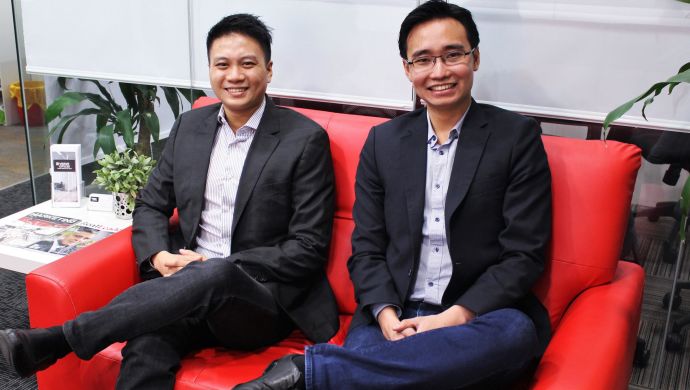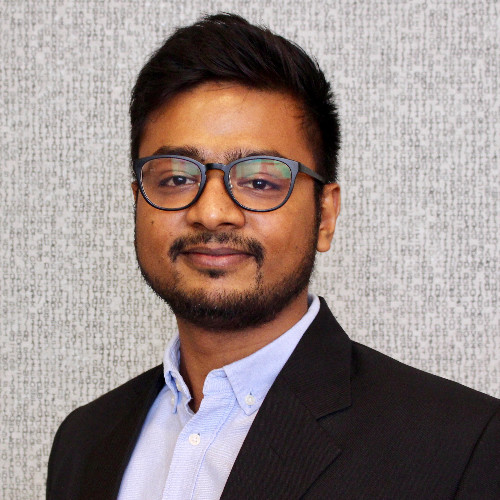Here is how the company scaled its culture and product and engineering teams

Funding Societies co-founders Reynold Wijaya (left) and Kelvin Teo.
Funding Societies supports SME owners in starting or expanding their businesses by providing access to funding from individuals or institutional investors.
Founded in 2015, the company has grown into a 300-people organization with over S$500 million (US$370 million) in funding. During this process, Funding Societies penetrated a few Southeast Asian markets and faced different challenges: growing a unique and positive culture while iterating its products a few times. I had the opportunity to speak with Ishan Agrawal, VP Engineering at Funding Societies, to learn more about the lessons extracted from this hyper-growth journey.
What has been Funding Societies engineering journey so far?
Funding Societies was started in 2015 by two Harvard grads out of their dorm rooms. Being fascinated by the success of Peer-to-Peer (P2P) lending in the Western world but having no technical background, our co-founders engaged a consulting firm in Indonesia to build the first version of the product and launched the company with that.
Four years on, we have grown to a 300+ people company, funded over S$500 million (US$370 million) in business loans, and become the largest P2P lending platform in Southeast Asia with licensed/registered operations in Singapore. Indonesia (we are called Modalku there) and Malaysia.

Ishan Agrawal, VP Engineering at Funding Societies
To drive this growth from the engineering side, we built an in-house team spread across the three countries. We have built a best-in-class investing experience (in Southeast Asia) on our apps and website. Our borrowers receive highly customized financing solutions seamlessly and fast.
Internally all this is powered by humans and algorithms working together to achieve speed, precision and a delightful experience for our users, with application to approval time is as low as two hours. Lastly but most importantly, we have created an excellent working culture that we are very proud of.
This, of course, hasn’t been easy. It has involved many late nights and weekends, some tough decisions, and tons of learnings.
What started as a .NET shop, is now a Nodejs, Golang and Angular backed product. We have rewritten our systems multiple times in the process, moving from a monolith to a microservices architecture, from manually configured infrastructure to infrastructure-as-code in Terraform.
The evolution of the business from a single-country company offering term loan products, to a multi-country company offering an ever-growing suite of customized loan products has prompted several re-writes of our components. Even currently, we are in the process of an architectural upgrade to support the ever-growing scale.
Personally, I feel it’s been a journey of tremendous personal growth, one that’s humbling and rewarding in more ways than I can describe. It’s very fulfilling to wake up every day knowing that my work enables businesses to grow, creates more jobs and contributes to the GDP of nations.
What are the biggest challenges you face as a growing team?
Most engineering leaders in Southeast Asia would agree that hiring is the biggest challenge any fast-growing engineering team faces here. The pool of local talent is limited with plenty of fast-growing startups in Southeast Asia vying for the same talent. Few engineering teams in Southeast Asia have seen the kind of scale where you really need to build high scale distributed systems.
Hence, finding such senior talent in the region is hard. The best products have the best people behind them, so we spend quite a bit of time and resources in making sure we hire the best. Hiring in itself can be hours of discussion so let me also turn to some other challenges.
Also Read: Traveloka reveals the greatest challenges engineers face
Training existing engineers to keep improving technically is really really important and something that companies often miss out on. One of our core values is to “Grow Relentlessly“, and we believe that everyone can achieve his/her fullest potential if he/she learns continuously. We encourage our team members to:
1) Read furiously;
2) Share knowledge and learnings in bi-weekly sessions;
3) Reflect every week on how we can do things better;
4) Pursue higher education and online courses parallelly.
As the team expands, there is a need to add processes and policies to keep a smooth ship sailing. There are many ways to do this. We realised that while it’s important to look at how other companies do it, it’s also equally essential to build our own unique set of policies based on our product offering and the needs of the company. Processes and policies should also be revised periodically to meet the changing needs of the company.
Another challenge is the gap between formulating policies and implementing them as there is always an inertia to change human behaviour. You need to rationalize, inspire, find champions and finally incentivize to drive some bigger policy changes.
Hiring is one of the top challenges that engineering leaders face. What is your approach to hiring?
Southeast Asia faces the challenges of a lack of experienced engineering talent and many fast-growing startups are competing for the same talent. So we don’t just limit hiring to Southeast Asia, but hire across the world. We work with recruiters (external and internal) and post on job portals. But we find that we get our best talent via referrals. What works for us is the culture we have created, where engineers are excited to bring their friends because they find it a good place to work and of course generous referral bonuses don’t hurt as well.
We never look for ‘Engineers who know X’, but for people with the strong fundamental knowledge and a track record of delivering great work. As a fast-growing company our requirements change all the time, so people who enjoy learning and can learn fast are a better fit for us.
Also Read: We analysed the hiring trends of Southeast Asia’s top e-commerce players, and here’s what we found
We offer candidates a speedy process and a positive interviewing experience no matter the outcome. For us, interviews are always two-way and never just one side asking questions with the other side answering. We are a data-driven company in whatever we do, so measure our hiring funnels, analyses drop-offs and iterate the process to maximize for an optimal two-way decision and a wonderful candidate experience.
I believe hiring doesn’t stop at closing a candidate. That’s just one-third of the work. The next third comes in the form of good onboarding. We have an intense structured onboarding programme to give an insight to the various teams, products and familiarize our new colleagues with the codebase.
The final third lies in retention by providing a great working culture and psychological safety in our team. We ensure our engineers get challenging work and have the autonomy to make decisions. We also actively weed out political chatter to let the team stay focused building out towards shared goals.
We are still a young fintech startup and a small engineering team, evolving and growing every day. Each engineer plays a key role and creates a direct and material impact on the success of the company, thereby the success of many SMEs and investors in Southeast Asia.
What are your tips for ensuring strong communication within your team?
Good communication within a team is directly reflected in its performance. In fast-growing teams, forms of communication keep evolving as the team grows and increases in complexity. Since we are a geographically distributed team where facetime is limited, strong communication becomes even more important.
Documentation is the single most effective form of communication for engineering teams. We copiously document the decision-making process for all big decisions, technical architecture and assumptions made.
I conduct weekly one to ones with my direct team to serve three main purposes:
1) Have a two-way timely and actionable feedback;
2) Talk about career progression;
3) Drive changes across the team.
It is a highly effective way to align their personal goals towards a shared goal. Taking a tip from Reid Hoffman from Greylock partners, we try to make ‘everyone a hero of their own life’s story’.
You cannot talk about communication without talking about meetings. They can easily suck the time out of your day without any real productive value, so we limit meetings only to discussions and decision making with pre-done research, documentation and asynchronous discussions over Slack and Confluence.
Effective and authentic communication is a big part of working together so we give it a strong weight age in performance reviews for the team.
Is there something that you’ve learned through the process of growing that you wish you knew before?
There have been countless lessons learned over the past three years at Funding Societies|Modalku as we grew from just a few people in a room to a 300+ strong team.
Remember that you are not alone in this. The problems I face as an engineering leader are not far from what my peers face at other companies. Over the past few years, I have started connecting with other engineering leaders in the region over cups of tea to share and learn about the challenges we face and different approaches to solving those problems.
Also Read: How startups can defeat challenges in customer satisfaction
Rewrites always take longer than planned, and migrations (especially database migrations) are the most complicated part of a rewrite. If you are in a fast-growing company, rewrites will be the norm. But always spend more upfront time in the planning and coding the migration, than the rewrite itself. A smooth migration will save you a lot of trouble from doing damage control later.
Cliched as it may be, you are only as strong as the weakest link in the chain. Don’t hire too fast, and spend time training and upskilling the team. Tailor the tasks to be challenging and impactful, with the right match to the individual’s skills.
—
If you found this interview interesting, follow more of the ScaleUp Valley content for further discussions on how others have scaled their companies. For example, the ScaleUp Valley podcast – where we speak with successful scale-ups about their growing process – is a fountain of valuable learnings brought to you directly by the source.
Mike Dias is the CEO at ScaleUp Valley – a business that provides scaleup off-site sessions, leadership programs and relevant content about the scaleup process to help companies overcome the ScaleUp Valley!
If you want to know more about ScaleUp Valley initiatives, calendar and purpose, join our community by subscribing to the ScaleUp Valley newsletter.
Editor’s note: e27 publishes relevant guest contributions from the community. Share your honest opinions and expert knowledge by submitting your content here.
The post Key lessons from Funding Societies’s hyper-growth journey appeared first on e27.